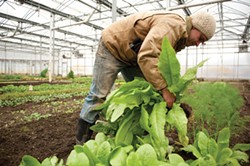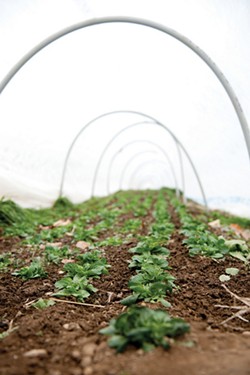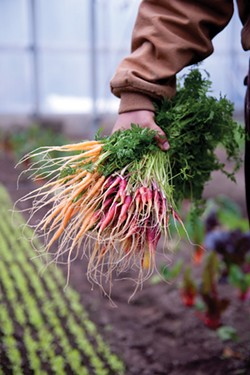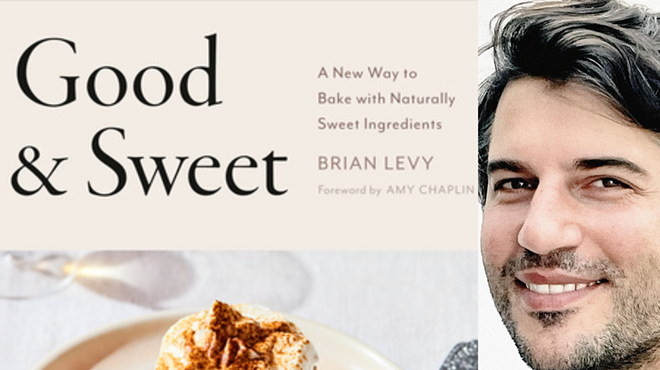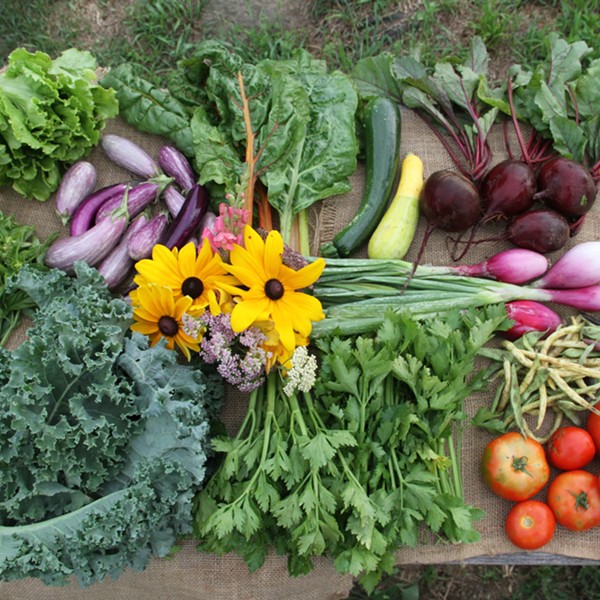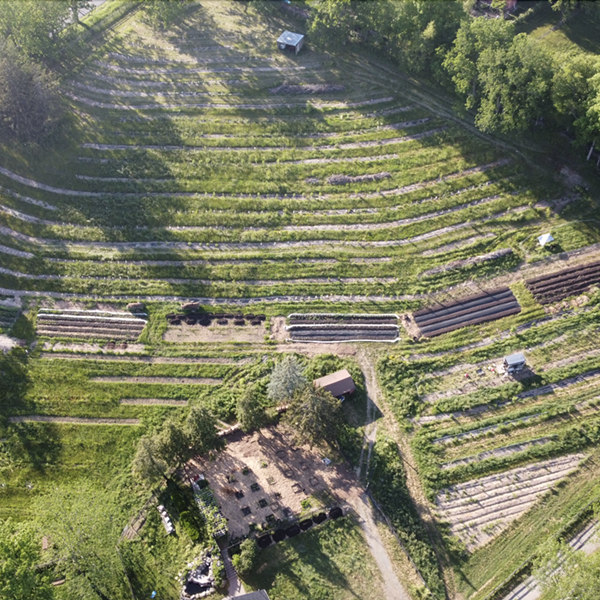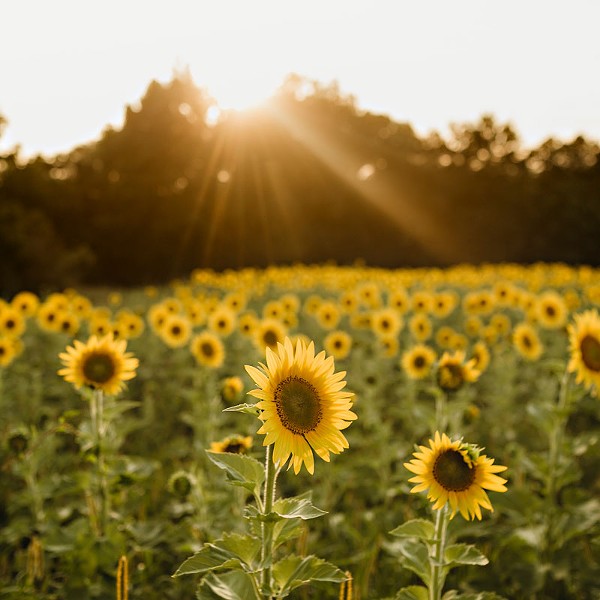Place, like taste, begins with the soil. “Good soil makes flavor,” says Algiere, enthusiastically. “We’re always working with the soil, touching it every day. It’s an ecosystem.” This dynamic, living dirt allows plants to achieve their full chemical complexity, which means they taste as good as they possibly can. Take pak choi, for example. The compounds that it generates to defend against pests are responsible for its bright, mustardy taste; the healthier the plant, the better the flavor. The sugars it makes when the frosts come mean that when caramelized quickly in a hot pan it develops a complex sweetness that contrasts beautifully with that sharpness. Add a pinch of salt and a splash of vinegar and you have a humble dish punching way above its weight. Salad greens like lettuce, arugula, mâche, and spinach are at their best in winter. Roots are sweeter: Parsnips left in the ground until it thaws are one of early spring’s great treats; they’re sugary enough to make into ice cream. It is simply not possible to get the same results with produce from thousands of miles away.
And this brings us to the relevance of these techniques for the home gardener. While a 22,000-square-foot heated greenhouse may be a tad ambitious, a few simple tunnels or cold frames can provide fresh vegetables of the highest quality all winter long. “Anything that can make it in November can survive the winter,” says Algiere. Eliot Coleman is a renowned expert on four-season gardening and the author most recently of The Winter Harvest Handbook, a book with a companion DVD (Chelsea Green, 2009). He lives in Maine, and his methods all arise from the simple truth of latitude: Kingston is the same distance from the Equator as Barcelona. Their climate is different, of course, but we get exactly as much sun as they do; with a layer or two of protection it is possible to grow everything here that they do there. With a hoop house or row cover mitigating the damaging effects of cold and wind, our backyard plot can easily be the equivalent of three USDA zones warmer: While our lawn is frozen solid, our salad is basking in Southern comfort.
Algiere explains that a heated greenhouse allows for winter growth, while a tunnel allows for winter harvest: “An unheated space is like using the outdoors as cold storage; most plants won’t grow much. They’ll be in suspended animation,” staying alive and happy until harvest. Coleman agrees, stating that hoop houses and the like are really for harvest extension, not year-round growth. The key is successive plantings of various crops from late summer through fall, so that there’s plenty to pick once growth slows to near stasis. As space opens up, spring seeds like radishes and greens can go in the empty rows.
The simplest method is to use appropriate lengths of block truss—stiff galvanized-wire mesh used for reinforcing masonry walls—or plastic electrical conduit poked into the ground so it forms arches that span the bed every few feet, with six-mil construction plastic draped over the hoops and weighted against the wind with bricks. The sun can easily heat the interior of such a space to 60 degrees, even when it’s 25 degrees outside. This keeps the soil from freezing overnight, and the plants either grow slowly or stay fresh and alive until harvest. An open-bottomed cold frame right outside the kitchen door allows one to grow and harvest salads and roots all winter long with a minimum of effort. Even a quarter-acre subdivision has microclimates; the north side of the house will often retain snow for weeks after the south side is boasting crocuses. Any cold frames or hooped beds should be placed in these warm spots to maximize use of passive solar energy.
Climate change notwithstanding, winter looks to be a regular occurrence around here for some time to come. The local options in the produce department are pretty thin in the cold months, but if we’re already growing some food for ourselves, we can extend the season for top-quality vegetables deep into winter, and get a jump on spring. This is a subject that can become quite detailed and complex at a commercial scale, but at its core it’s very simple: Plant some hardy crops from late summer into the fall, and give them some shelter. You will reap salads that positively squeak with freshness, and cooking greens and roots that surpass anything else available.







